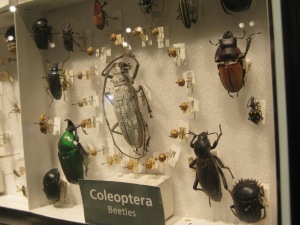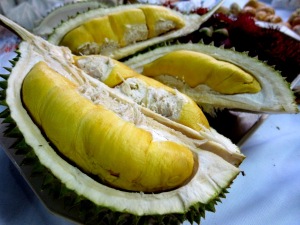At the time of his death in 1913, Alfred Russel Wallace was the most famous scientist in the world. He was acknowledged as the co-discoverer of evolution by natural selection, along with Darwin, and by no means a footnote. 2013 is his death centenary. Last week, the Harvard Museum of Natural History marked the occasion with an Alfred Russel Wallace Day and Natural History Museum, London has events in store for the rest of the month, including a talk with David Attenborough. Wallace enthusiasts hope that all this publicity will make Wallace a household name alongside Darwin.
These days the term natural history is not widely known. Because these days, naturalists go by the term ‘biologists’ and outside of this community, Wallace’s contributions to evolution have been completely eclipsed by Darwin’s. Partly because of the Darwin industry, and also because of Wallace’s associations with things we label questionable today, like seances and phrenology. But in the nineteenth century, before DNA and molecular biology natural history was right up there with physics and chemistry. It wasn’t until after quantum mechanics, that biologists were ‘converted’ to the micro-world and sought explanations for everything there, and began to ignore natural history, that is, the organisms themselves.
Other than technological limitations, it is important to remember the historical context in which Darwin and Wallace operated. In Victorian England, there wasn’t that much variety to be found among organisms and fruits. Man was still the center of the natural world.
“Poets and moralists, judging from our English trees and fruits, have thought that small fruits always grew on lofty trees, so that their fall should be harmless to man, while the large ones trailed on the ground. Two of the largest and heaviest fruits known, however, the Brazil-nut fruit (Bertholletia) and durion, grow on lofty forest trees, from which they fall as soon as they are ripe, and often wound or kill the native inhabitants. From this we may learn two things: first, not to draw general conclusions from a very partial view of nature, and secondly, that trees and fruits, no less than the varied productions of the animal kingdom, do not appear to be organized with exclusive reference to the use and convenience of man.” Wallace. The Malay Archipelago.
Leaving their comfort zones, Darwin and Wallace entered the wild imbued with a sense of adventure. Here, man was an intruder and nature was hostile. And here, while both of them saw similar things and reached the same conclusion in one regard, they interpreted some observations quite differently. Thanks to today’s Darwin trumpeters, misconceptions abound about Wallace as a person, and about his contributions to the theory of evolution.
“People will think that Darwin was an atheist, but he wasn’t. He wasn’t Christian but he still believed that God created the universe,” says George Beccaloni, curator of beetles and the Wallace Collection at NHM, London and maintainer of the wallacefund website. “Wallace believed in the spirit world, but he was a materialist till his seventies or eighties. Up to that point he believed that everything in nature could be explained by natural laws and evolution apart from the human mind.”
This later departure from evolutionary orthodoxy is what makes Wallace unpopular today.
“What Wallace saw was that your local ‘savage’ had the same sized brain and equal mental capacities to that of a naturalist in Britain. Their lives were simple… but natural selection only works so that the adaptation is as much as needed, not more than that. So how could it be that the human brain evolved to such complexity, more than is actually needed? How did this organ arise?”
Darwin and Wallace differed on another crucial point: sexual selection. According to Darwin, male birds were selected to be bright and showy and female birds inconspicuous because the females had to choose better males. Wallace argued that females were selected to be drab because they were sitting on the nest, looking after the eggs.
“I think Darwin was right here,” says Wallace historian Andrew Berry, who impersonated Wallace for the Harvard retrospective. “But Wallace makes an interesting argument. He thought that the default situation was brightness, and natural selection was favoring drabness for the sake of camouflage. ”
In other words, Wallace elevated the importance of the female over the male. Contrasted with Darwin’s alleged misogyny, , Wallace’s views might seem more attractive to our current era.
Wallace was not just a naturalist. He practically founded astrobiology with the seminal treatise ‘Man’s Place in the Universe‘, and, was a rather skilled artist. But why did such an intriguing individual end up becoming a mere footnote in history?
“Wallace is seen more as a dilettante,” thinks Berry. “Darwin consolidated on his theory, kept publishing things in support of previous ideas. But for Wallace, it was just this one thing he did, and moved on.”
Unlike Darwin’s accounts, which consolidate his scientific inferences, Wallace wrote memoirs. He rarely felt the need to interrupt them with scientific ruminations. Here is an excerpt where Wallace describes the fruit Durian:
“This pulp is the eatable part, and its consistence and flavour are indescribable. A rich custard highly flavoured with almonds gives the best general idea of it, but there are occasional wafts of flavour that call to mind cream-cheese, onion-sauce, sherry-wine, and other incongruous dishes. Then there is a rich glutinous smoothness in the pulp which nothing else possesses, but which adds to its delicacy. It is neither acid nor sweet nor juicy; yet it wants neither of these qualities, for it is in itself perfect.It produces no nausea or other bad effect, and the more you eat of it the less you feel inclined to stop. In fact, to eat Durians is a new sensation worth a voyage to the East to experience.”
Moments like this lets us glimpse Alfred Russel Wallace the man. But what about the naturalist? To Wallace at least, there seemed to have been no difference.
Related articles
- Alfred Russel Wallace: a Heretic’s Heretic (publicdomainreview.org)
- On (re-)discovering Alfred Russel Wallace (oup.com)
- Evolution’s forgotten man (macleans.ca)
- Centenary of Death of Alfred Russel Wallace (canadafreepress.com)





